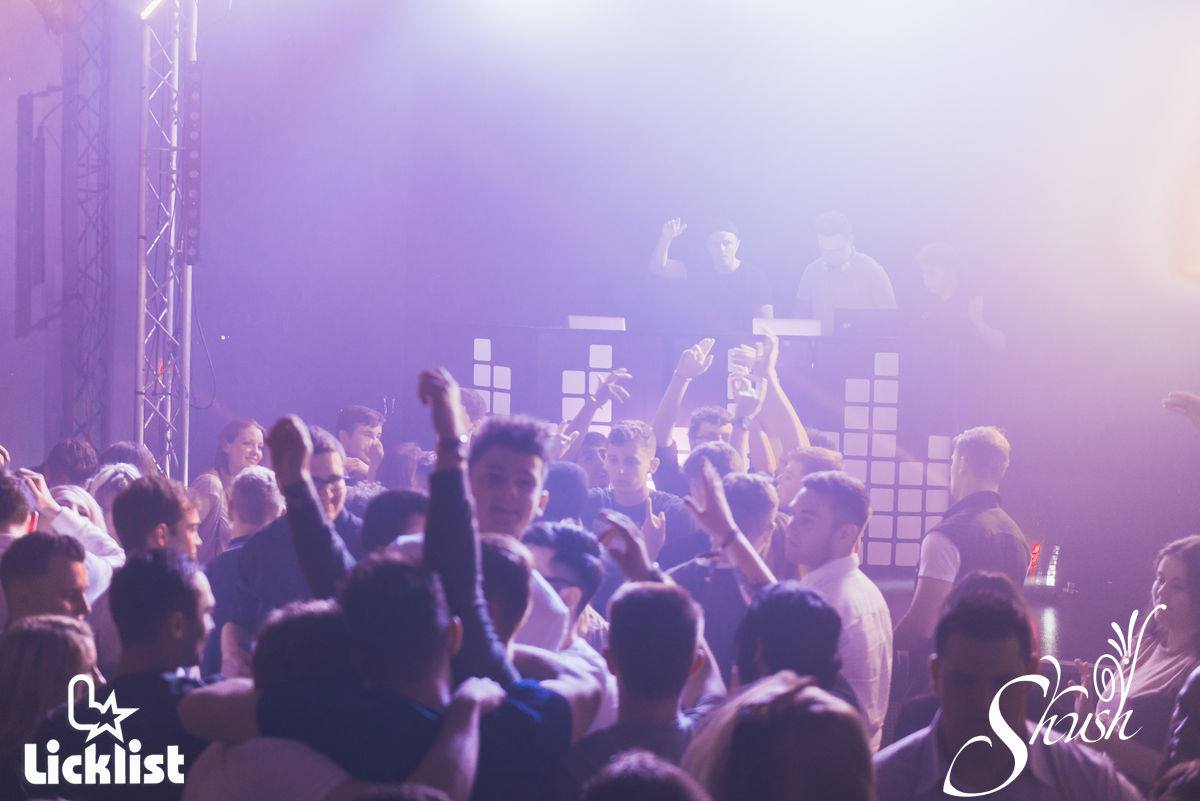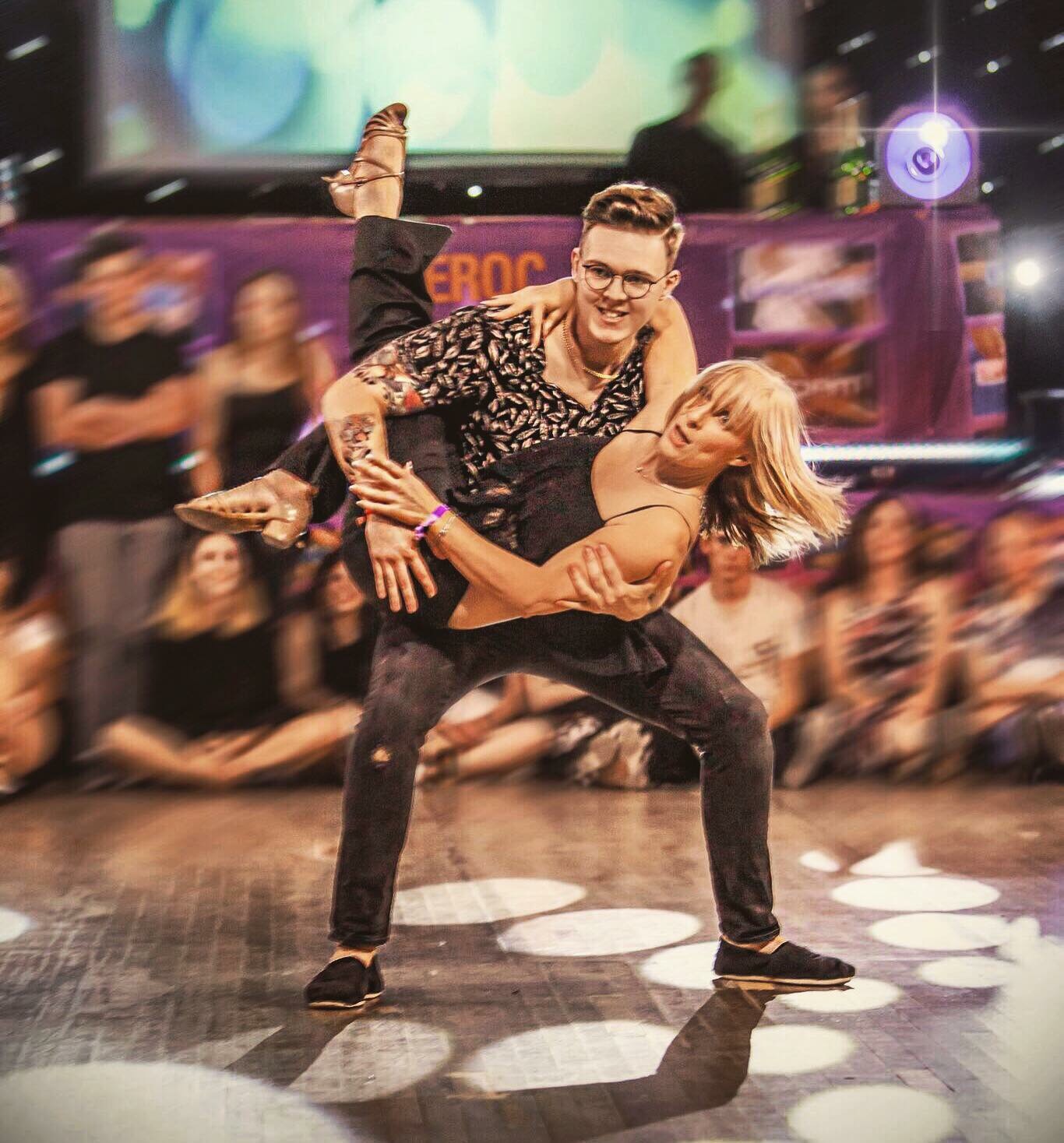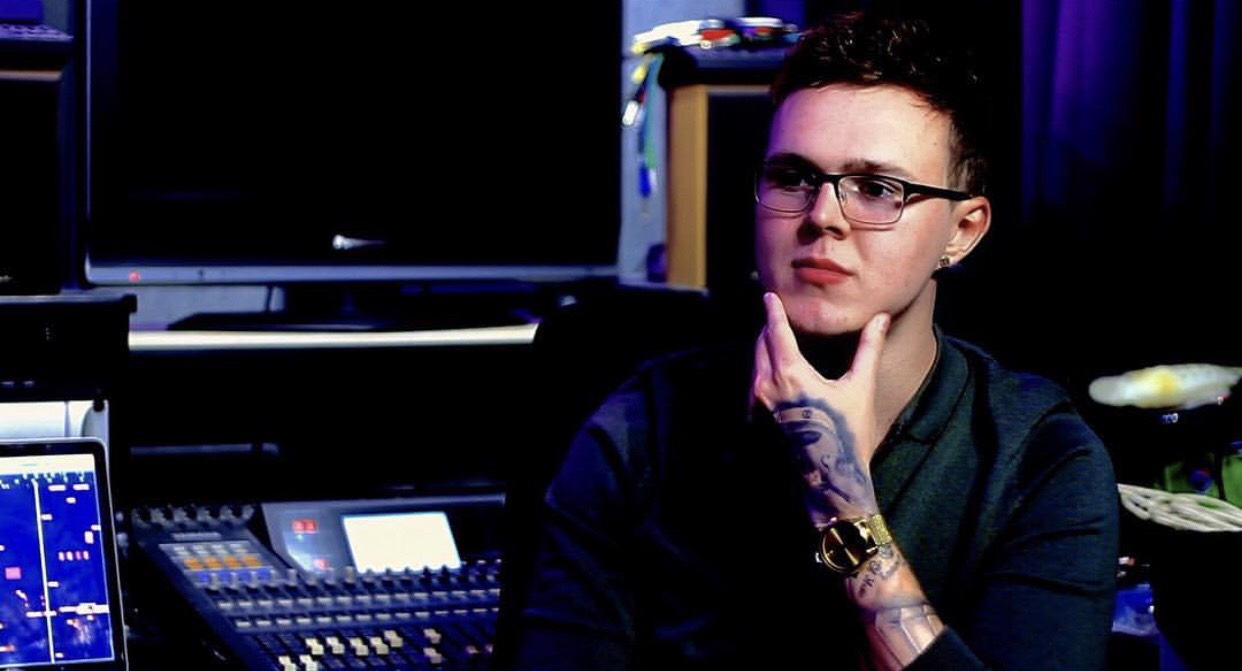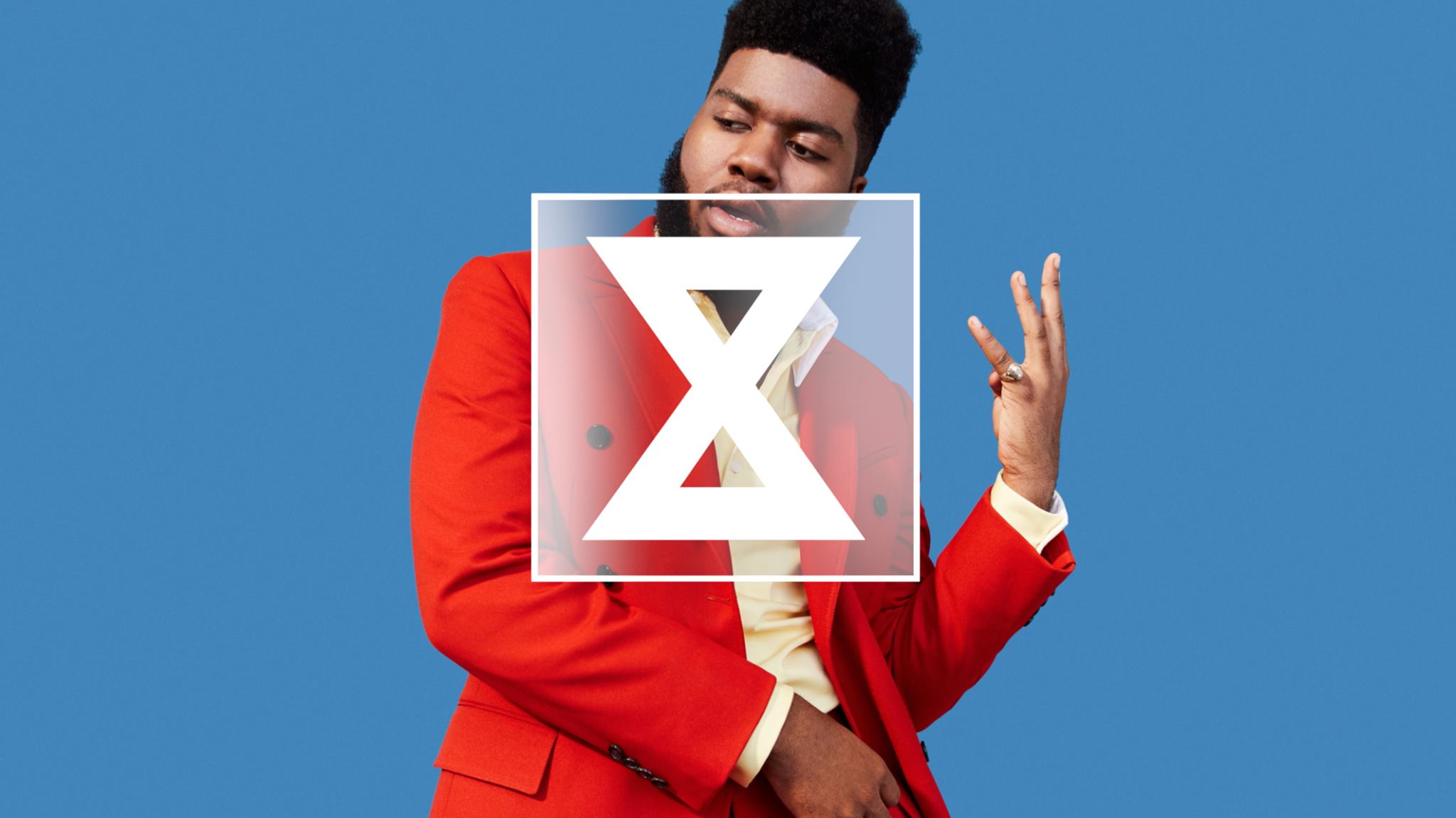Keep 'em Dancing! Making Music for Ceroc
Author: Chris Whitehouse
Date: 26th December 2018
Categories: Dance, DJ, Music
Why do you learn to dance? To dance to music.
When do you dance? When you hear music.
What MAKES you want to dance? The RIGHT music!
Music is SO important to a dance night. Music is the core.

Why do you learn to dance? To dance to music.
When do you dance? When you hear music.
What MAKES you want to dance? The RIGHT music!
The last one is important. It’s the thing that makes you want to get up, and do what you do best. Music can be inspiring, emotional, energetic, and lyrical.
A dancer’s reaction to the music varies upon genre. For example BIG anthem tracks make you move quickly and show off your big moves. Slower tracks let you focus on the lyrics or the flow of a melody. Suddenly your dancing style changes, it becomes more subtle but meaningful. It's more about connection as you’re no longer just moving to a beat structure, you’re moving to the instrumentation of a track. This can be piano, strings, vocals, etc. It’s a great way to be able to listen to your partner as you have no idea what they’re going to do. Dance is a conversation without words.
To be able to grow as a dancer, you need to be able to adapt to different music. Learn the different elements that build together to construct a song. Listen to what you’re dancing to. What ARE you dancing to? That’s the start of the story you’re about to tell.
Me and Music
Funnily enough, I never took a single Music class. Music runs in my family. My Grandad is a musician (pianist and song writer). My Dad took it a little further and built a recording studio. I was never allowed to touch any of the equipment from a young age, but he would always show me what he was doing.

When I was 9 years old, my teacher said to me in class “if you finish early, you can play on Dance EJay 4”. I loved it! This old school program allows you to link music together using pre-made samples. I experimented with it all the time. I bought every single software they released.
When my Dad noticed that I was getting into music, he recommended some higher-end software and had it installed on my ancient Windows XP computer. I learned quickly how to operate it well, and all my friends started calling me ‘the music man’. I’d make bands with friends, play the piano in open evenings at school. Whenever the music teacher said “get yourselves a partner” nearly every single person ran for me.
Fast forward a good few years to 2013 and a record that I had produced was played in a club for the first time. It quite frankly blew my mind. I was only ever used to hearing my music on my laptop speakers or cheap headphones. I watched everyone dancing and thought “Yes! This is EPIC! THIS is what I want to do.”
That same club DJ taught me how to DJ live in exchange for me teaching him how to produce. We formed the original DJ duo ‘Xcursion’. I recently redesigned my Dad's studio, ripped it all out, and rebuilt it from scratch. Giving it the name ‘The SoundBase’ we co-run it to this day, and it is the official studio of Xcursion.
Me and Dancing
I used to go out with my parents to the local pub. My parents’ friends did ‘Ceroc’ and in a tiny space on the pub floor, dropped some seriously hot moves! For someone who had never seen partner dancing, it was mind blowing. I still remember all the moves they did…but it was the Pretzel that did it for me! “How on earth do you make your arms do that?” I asked them. They taught me a couple of moves.
I received a phone call a couple of weeks later. My parents were going to visit Ceroc Groove in Bromsgrove for the first time. They told me the next morning how it’s like a night out; there is a DJ and a disco.
A DJ??!! My interest spiked…

I got pulled along the next week. I met Debbie Attwood and I’ll always remember my first dance with a Ceroc teacher. I only had 3 moves. The Octopus, the Manspin, and the Catapult. I lead them on Debbie and she asked “How long have you been doing this?” “4 hours” I replied. “Well it bloody well paid off!” she said.
I felt a great buzz, the atmosphere was electric and everyone was having a great time. I felt inspired to go back. Debbie was always very supportive and for that I’ll be eternally grateful.
My parents sadly gave up after a few weeks, but I found a way to go without them. I saw the ‘dance family’ between everyone who attended and I desperately wanted to be a part of that.
7 Years later, here we are. I qualified as a Ceroc teacher in 2018, and I have been teaching and DJing for Ceroc Groove, alongside producing my own music with Xcursion, ever since.
Ceroc Dancers (and their unbreakable connection with the music)
As a Ceroc DJ, there is a constant challenge to work the room. Understand YOUR crowd. That’s important. It’s nice to take your dancers on a journey. Work through tempos, genres & styles. Everything from modern anthems to classics. You MUST give them a challenge every so often; throw them a curve ball. This could be a slightly different beat structure, a challenging tempo, unusual instrumentation…but this is what helps dancers progress and keeps their mind tuned.
If you play too much of one style or tempo, it can become repetitive. Keeping a room moving and motivated is key to keeping a busy floor.

It wasn’t long before I wanted to blend my passions of Ceroc and music production. Could my experience of filling a night club floor also work on the Ceroc floor? I needed to first think about the similarities between the two. What do ALL dancers want from their music? Cerocers, ravers and otherwise?
- A strong and interesting intro. That will instantly give people a feeling of wanting to dance. Start low, build the suspension, entice people to want to know more about what is being played. So, now they’re on the floor, great!
- Whats next? Structure. You need a killer beat! If I’m producing for main room, something uplifting. Keep the energy levels high! Okay, so you can have a kick drum on every beat if you want, but if you just use that all the way through it becomes boring. Bring the beat in, take the beat away, let it build, let it change, and keep them guessing.
- Instrumental has to be solid. Keeping flow is important. If you leave a beat ghosted for too long (a term we use to refer to a repetitive beat with no build or development in the supporting instrumentation) it can kill the vibe, become boring and no longer be danceable. Play with the melody, the piano, the strings. Don’t just throw everything at it…be selective. Let people hear the intricacies of the layers and how they can be constructed together in different ways.
- Vocals, Something clear. Ideally, it should work with and reflect the beat. Get them singing while dancing! That’s important too. If the words are complete nonsense, it’s pointless. If they mean something however, you can get people to emote while they are dancing. Are the lyrics celebratory, melancholy, emotive, poignant?
- A powerful ending. Something that helps the dance finish. What do you want them to remember about the track?
So I did it! I made my first track that was specifically devised for Ceroc dancers. I sent it to DJs, they decided to play it, and I loved the reaction. Watching the room at a Ceroc Southport weekender dancing to my music for the first time was such a vibe. You can feel the electricity in the air. To watch them not only dancing but smiling and reacting to something I had composed is another level of pride. To watch my record ‘You’re Mine’ as a Finals track in the Ceroc Scottish Championships was insane! People battling and earning dance medals to my music...I couldn’t believe it.
The Charts
The Ceroc dance floor seemed to react well to the music, but would the rest of the world? I will always remember releasing ‘Cold War’…we got a few downloads in the first week.
Later, when scanning the iTunes chart for new music to play in one of my club DJ sets, I found my track at number 128? WHAT? I was in the charts!
I kept an eye on it, and immediately encouraged my dance family at Ceroc Groove to do the same and buy the record. Within a couple of days it shot up to position 90. I contacted the Ceroc masses on Facebook and asked them for support too!
The next day 49.
I thought “this is crazy but it’s happening!”
Finally, we stopped at 24. YES! I was the 24th most bought dance track in the UK.

After our peak week, sadly we eventually slid down and dropped off. Reaching the top 20 would have been amazing, however once I started to compete with the likes of Calvin Harris and Dua Lipa I realised that what I had created was something big. I was up there with them! Overtaking a lot of major artists was definitely an accomplishment, and also a realisation and a confidence boost that with some hard work, I can do it again.
Since then, ‘You’re Mine’ has been extremely popular across the Ceroc front. I would attend random freestyles and weekender DJ sets and hear it playing. I was becoming part of the furniture! ‘Star Gazing’ crosses between both the up-tempo main room and the down-tempo SILC room and brings a real dance energy to the slower room. I have a good feeling that ‘The Afterglow’ is going to go down well in the dance world after a few final touches. It’s perfect for the SILC room vibe.
Playing my music for Ceroc nights has been so rewarding. The support from the community has been amazing. Sometimes, when my tracks are played, a lot of people don’t realise that they are actually dancing to something that I have produced. It’s just another track to them. It’s a great feeling when my track fits so naturally within the rest of the set, and I can't lie about how childishly excited I feel when my dance partner comments to me "Ooh I liked that one..who's it by?"
To follow my journey, visit;
https://www.facebook.com/auditonuk
https://www.instagram.com/auditonuk
« All blogs